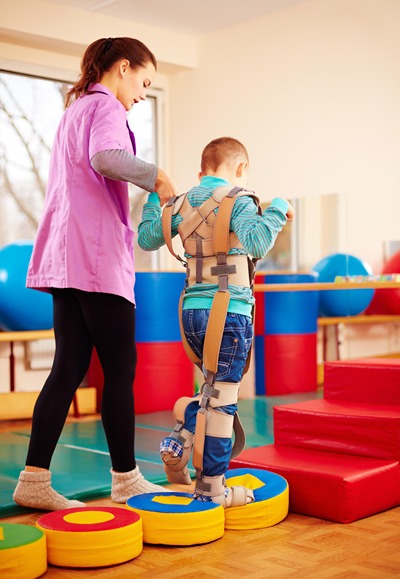Early Signs of Cerebral Palsy in Children
Cerebral palsy is a neurological disorder that significantly impacts a child’s motor functions and muscle control. Early signs of cerebral palsy can appear in the first few months of life and include developmental delays, such as a child being slow to reach milestones like rolling over, sitting, crawling, and walking.
Parents and caregivers should be vigilant, as early intervention can be crucial to managing the condition effectively. Children with cerebral palsy often display specific symptoms, including impairment of muscle tone and coordination. For instance, exaggerated reflexes, muscle stiffness (spasticity), or a floppy appearance of the arms, legs, and trunk may indicate cerebral palsy. Identifying these symptoms early can lead to timely therapeutic intervention, which may help limit the disorder’s impact.
This condition affects various aspects of motor function, such as balance, control, and posture. The exact causes of cerebral palsy are not always known, but most cases occur before or during birth. Recognizing these early signs and seeking medical advice promptly can make a significant difference in a child’s development and quality of life. For more detailed information, consider resources like those provided by NICHD and Mayo Clinic.
Understanding Cerebral Palsy
Cerebral Palsy (CP) is a neurological disorder characterized by impairments in motor function and muscle coordination. It is primarily caused by brain damage occurring before, during, or shortly after birth.
Definition and Types
Cerebral Palsy is a disorder that affects body movement, muscle control, coordination, reflexes, posture, and balance. It can be classified into several types based on the movement issues and the body parts affected:
- Spastic CP is the most common type, exhibiting stiff muscles and awkward movements.
- Dyskinetic CP includes uncontrolled movements, making it hard for the person to sit or walk steadily.
- Ataxic CP impacts balance and depth perception, leading to unsteady, jerky movements.
- Mixed CP combines symptoms of the aforementioned types.
Each type of CP presents varying degrees of severity, from mild to severe, impacting the child’s daily activities and quality of life significantly.
Causes and Risk Factors
Cerebral Palsy is typically caused by abnormal brain development or brain injury occurring before, during, or shortly after birth. Issues such as premature birth, low birth weight, multiple births, and infections during pregnancy can increase the risks.
Additionally, medical complications during labor and delivery, such as asphyxia (lack of oxygen), may contribute to the development of CP. Genetic factors can also play a role, although they are less common.
Preventive measures, such as ensuring proper prenatal care and addressing high-risk pregnancies, can help reduce the likelihood of a child developing Cerebral Palsy. Identifying and managing potential risk factors early is crucial for minimizing the chances of this neurological disorder.
Early Detection of Cerebral Palsy
Early detection of cerebral palsy can significantly improve the quality of life for affected children by allowing for timely interventions. Recognizing early signs and symptoms is crucial for initiating appropriate evaluations and treatments.
Importance of Early Signs
Identifying early signs of cerebral palsy can facilitate prompt medical evaluations and early intervention strategies that can enhance motor, cognitive, and communication outcomes. According to the American Academy of Cerebral Palsy and Developmental Medicine, early detection allows for the beginning of treatments that can maximize neuroplasticity. It also helps prevent secondary complications and minimizes the impact of disabilities. Early intervention can include physical therapy to foster motor skills and other therapies to support cognitive and language development.
Common Early Symptoms
Early signs of cerebral palsy are generally visible within the first few months of life. Some key indicators include developmental delays, such as slowness in reaching milestones like rolling over, sitting, and walking. Infants may also display unusual postures, such as keeping one hand fisted or choosing to cross its legs. According to the National Institute of Child Health and Human Development, erratic muscle tone—characterized by being either too stiff or too floppy—can also signal cerebral palsy. Additional symptoms might include poor coordination and involuntary movements.
Motor Skill Milestones
Monitoring motor skill development is integral to early detection of cerebral palsy. The Hammersmith Infant Neurological Evaluation (HINE) is one tool used to assess neurological function and predict cerebral palsy from 2 to 24 months of age. Key milestones to observe include the ability to sit by around 8 months, crawl by 10 months, and walk by 18 months. Delays in achieving these milestones, coupled with abnormal muscle tone and movement patterns, should prompt further neurological assessment. The goal is to identify any deviations early so that appropriate interventions can be put in place to support the child’s development.
Diagnostic Process
Diagnosing cerebral palsy (CP) involves several steps to ensure accuracy and early intervention. The process typically starts with monitoring an infant’s development and observing any potential signs of impairment.
Medical professionals use standardized assessments such as neuroimaging and neurological exams to detect abnormalities.
If a baby is born prematurely or at a low birth weight, they receive close monitoring in the neonatal intensive care unit.
Regular well-baby visits are crucial, where doctors examine the infant for signs of CP, including unusual muscle tone or motor delays.
Early diagnosis is essential and can be made as early as 6 months in some cases. International guidelines support early recognition for better outcomes.
Parental observations play a significant role. Parents may notice if a child displays unusual behaviors such as crossing its legs when lifted or struggling with specific movements.
The combined predictive power of neuroimaging and specific tests significantly enhances early detection. Families prefer early diagnosis to start early intervention and support.
Early intervention programs help optimize motor and cognitive development, making early diagnosis vital.
Prompt referrals to specialists can ensure children receive necessary therapies and support. This multifaceted approach aids in managing and improving the quality of life for children with CP.
Support and Management
Effective management of cerebral palsy (CP) involves targeted early intervention programs, various therapeutic strategies, and robust family and community support systems. These approaches aim to optimize the child’s development and quality of life.
Early Intervention Programs
Early intervention programs are crucial for children with cerebral palsy. These programs start as early as possible and are designed to optimize motor, cognitive, and communication outcomes. According to guidelines from Nationwide Children’s, intervention can begin as early as 6 months of age. Key components of these programs include physical, occupational, and speech therapies tailored to each child’s unique needs. By focusing on these areas early, children can develop essential skills and prevent secondary complications.
Therapeutic Strategies
Therapeutic strategies are fundamental for managing cerebral palsy. Physiotherapy aims to improve movement, strength, and coordination. Occupational therapy helps children develop daily living skills. Speech therapy is crucial for children who have communication challenges. According to a study in NCBI, about 1 in 4 children with CP are nonverbal. Customized therapeutic approaches are necessary to address the specific impairments each child faces. These therapies often utilize play-based and task-specific activities to engage children actively and yield better outcomes.
Family and Community Support
Family and community support play a significant role in the well-being of children with cerebral palsy. Engaged and informed families can advocate for their children’s needs effectively. Community support groups provide families with resources, emotional backing, and a sense of solidarity. Resources such as the American Academy for Cerebral Palsy and Developmental Medicine offer valuable information and guidance. Family-centered care models, including parental training and support networks, empower families to provide the best care. By fostering a supportive environment, children with CP can lead fulfilling lives.




